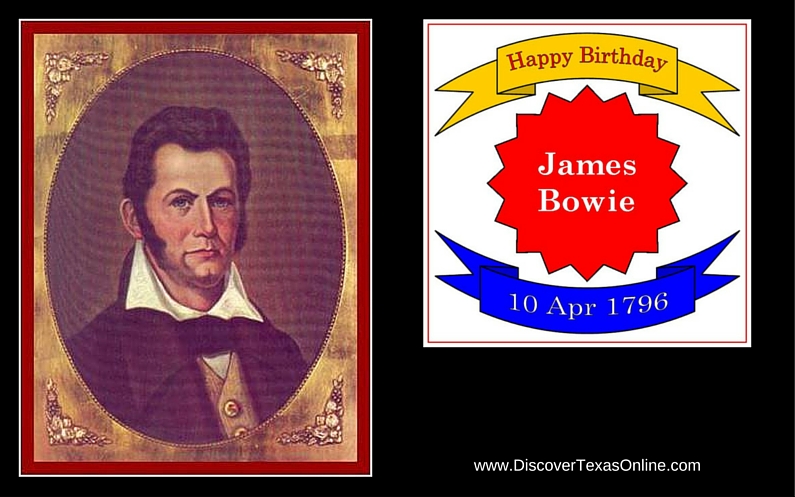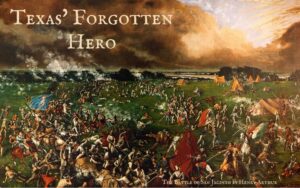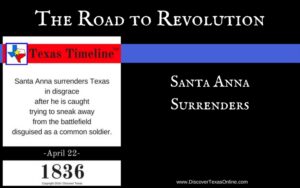
Actually, we’re not quite sure when James Bowie was born, but probably April 10, 1796 near Franklin, Kentucky.
Some say he was a “fighter, frontiersman, and adventurer.” Others say he was a brawler, treasure hunter, slave trader, and money launderer for the pirate Jean LaFitte. Those who knew him wrote that he was an humble man who did not boast of his adventures and never used profanity or vulgarities. Whatever else is true of Jim Bowie, he is one of the most memorable figures of early Texas.
Texans remember the tough-fighting Bowie as a hero and defender of the Alamo. Though he died at the Battle of the Alamo just shy of his 40th birthday, his was a colorful life!
As a teenager, he worked in the lumber industry floating logs to market. He hunted, fished, and trapped bears. He caught wild horses and rode them. He caught and rode alligators, too. When he and his brother, Rezin, enlisted as soldiers while still in their teens, it likely surprised no one.
Bowie came to Texas in 1828, after he was involved in a duel that turned violent. James was by all accounts an open and approachable fellow, but he also had a terrible temper! He killed a man (with a rather large knife he made for himself which is still remembered as a Bowie Knife) and was very nearly killed himself. When he recovered, he headed west.
By the time he reached Texas at the age of 32, he had owned a sugar plantation and a mill and dabbled in land speculation. He’d known tragedy, too. His first sweetheart, Cecilia Wells, died two weeks before their wedding in 1829. In 1831 he married Maria Ursula de Veramendi, daughter of the vice-governor of the province. They settled down in San Antonio and had two children, but a cholera epidemic in 1833 wiped out Bowie’s entire family. He sank into despondency and began to drink.
As the rebellion heated up, Sam Houston sent Bowie to the Alamo with authority to evacuate the volunteers and artillery and blow the place up. Instead he stayed as second in command. He may have felt he had little to lose.



